 For a fulfilling killing nothing beats a blade. 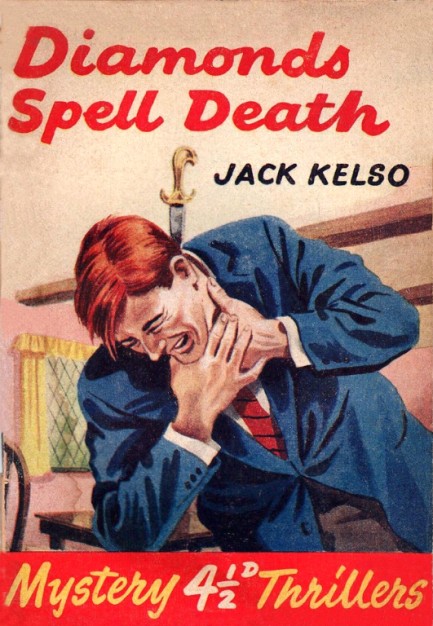
Today we have for your pleasure a collection of vintage paperback covers featuring characters on both the giving and receiving ends of knives—or knifelike tools such as icepicks. Above you see Harry Bennett art of a poor fella getting a knife from nowhere. Maybe Damocles did it. It's a funny cover because we don't think we'd grab our throats if we got stabbed in the spine, but let's hope we never find out. Below, in addition to numerous U.S. and British offerings, you'll see covers from France, Italy, Spain, and the Netherlands. There are many, many paperback fronts featuring knives—we mean hundreds—but we decided to stop ourselves at thirty-two today. These do not represent the best (as if we could decide something like that), or our favorites, but merely some interesting ones we've come across of late. If you're super interested in this particular motif we have plenty more examples in the archives. They'd be hard to find, because we don't keyword for knives, so here are some links to get you there: 1, 2, 3, 4, 5, 6, 7, 8. 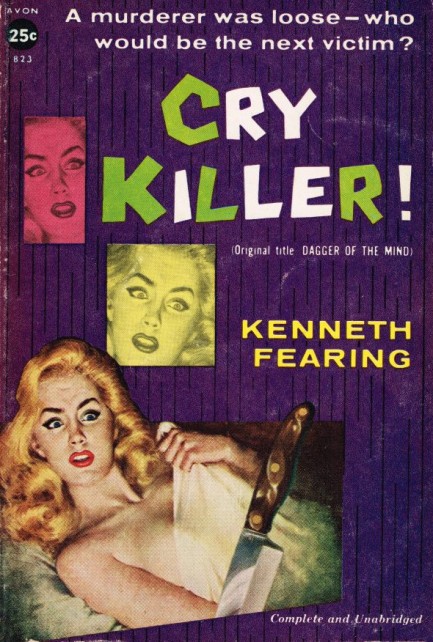 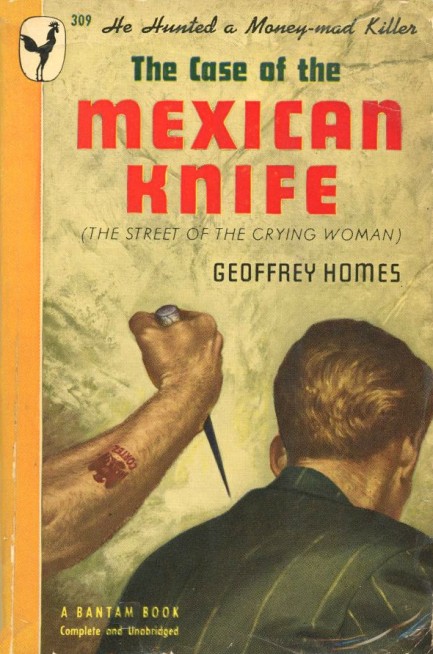 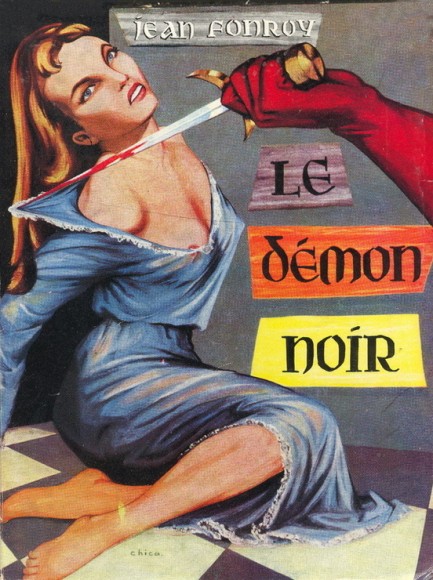 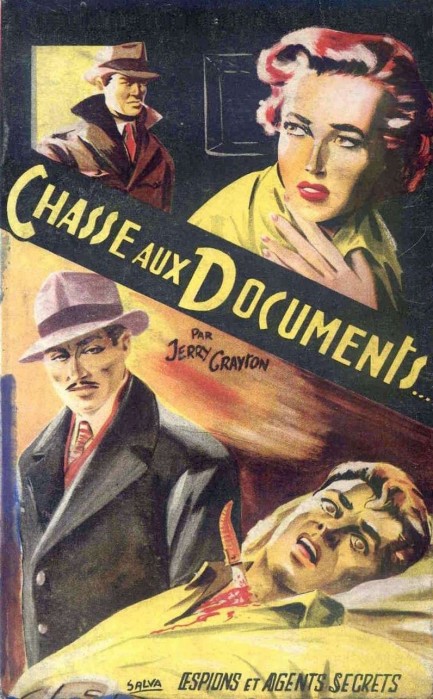 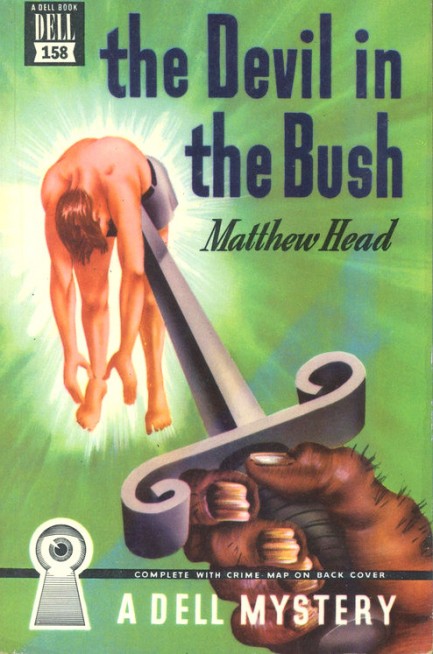 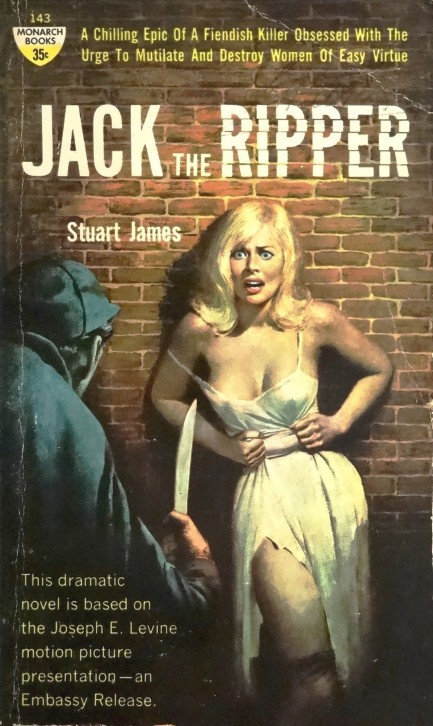 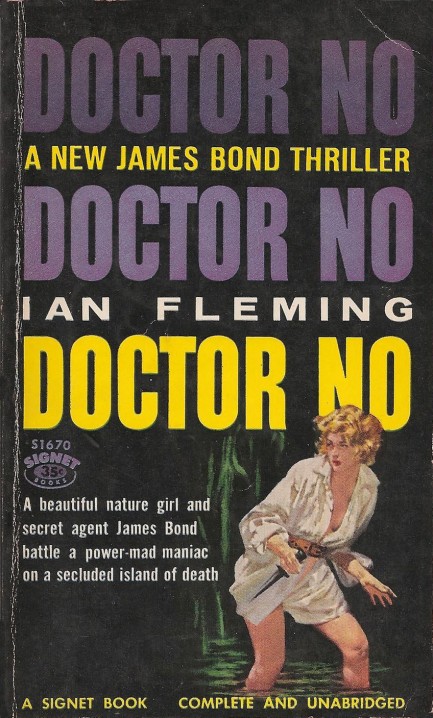 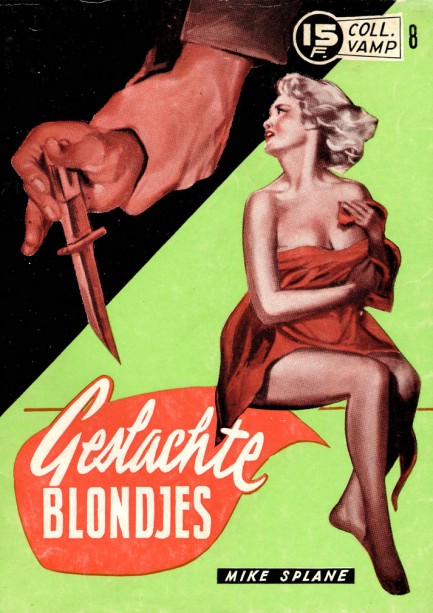 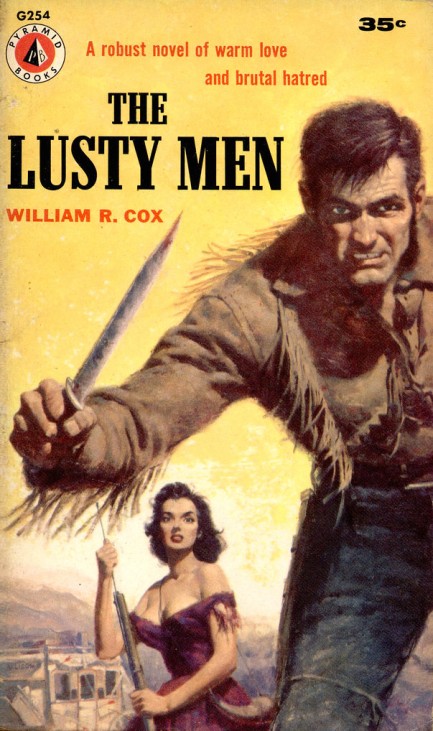 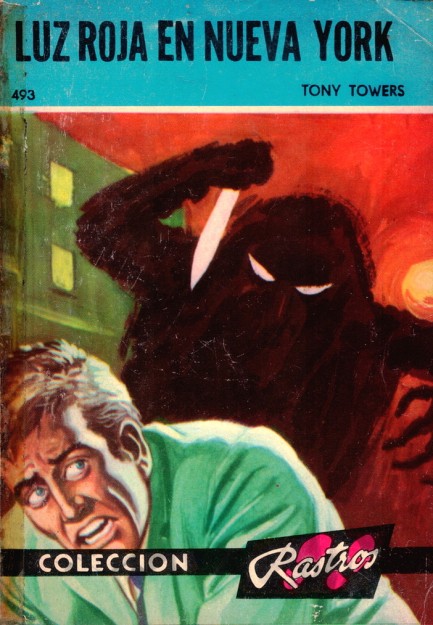 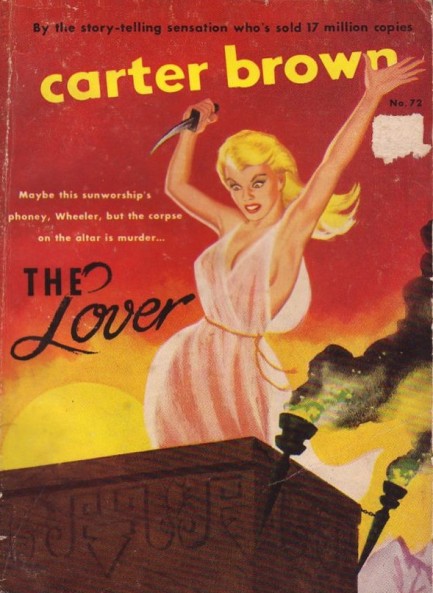 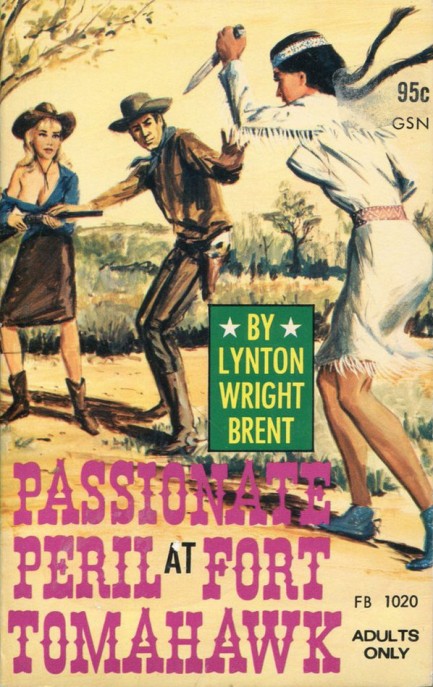 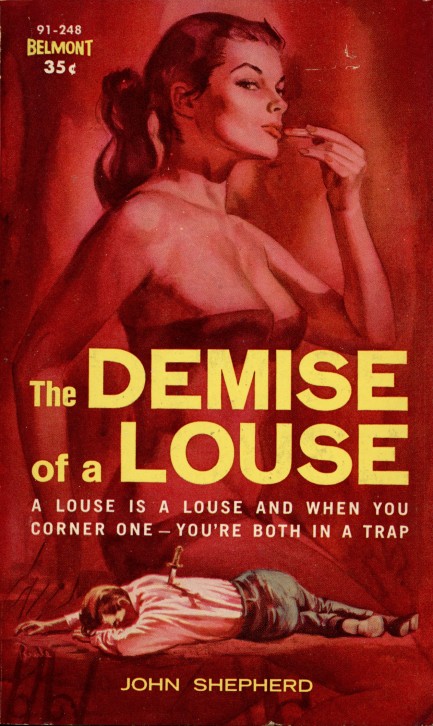 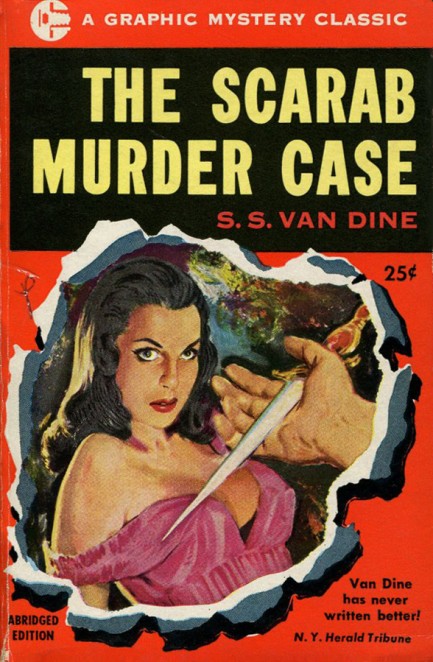 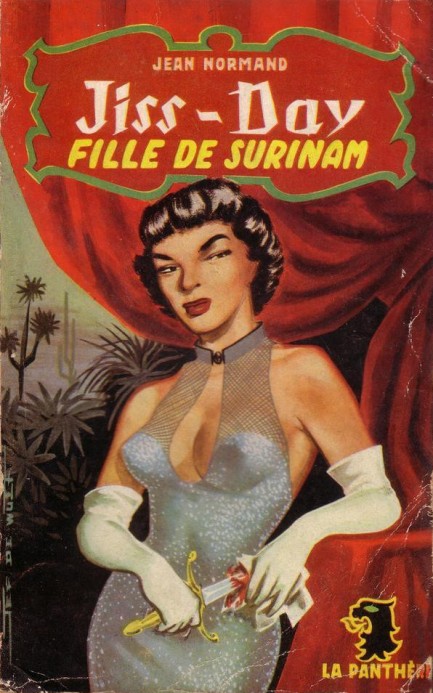 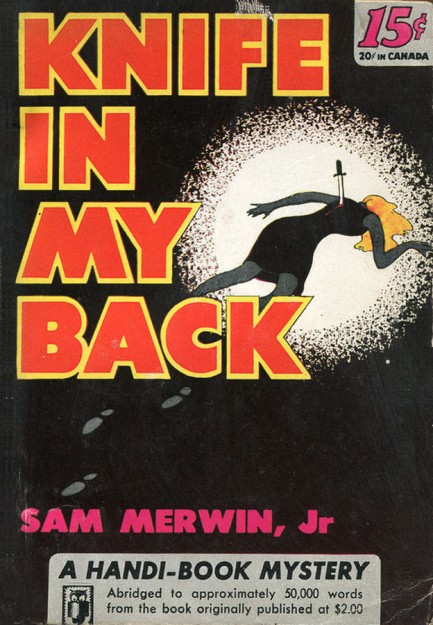 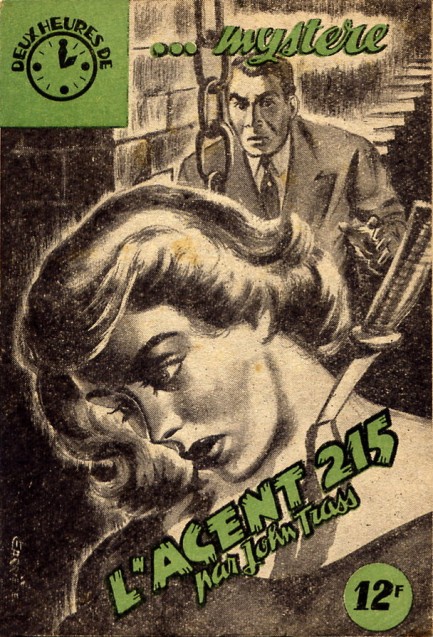 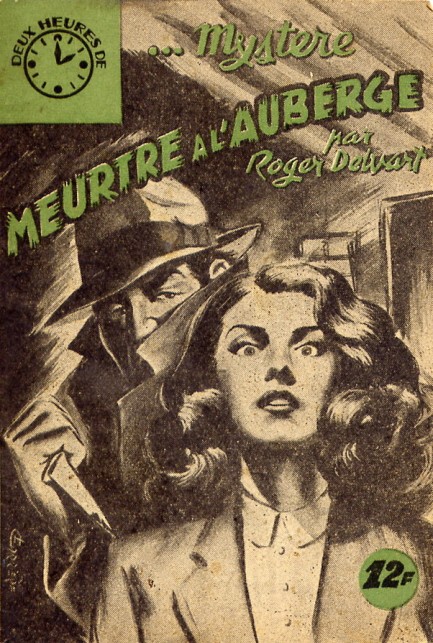 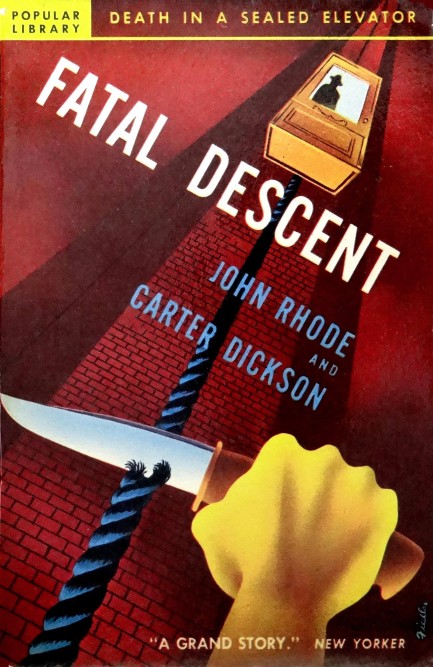 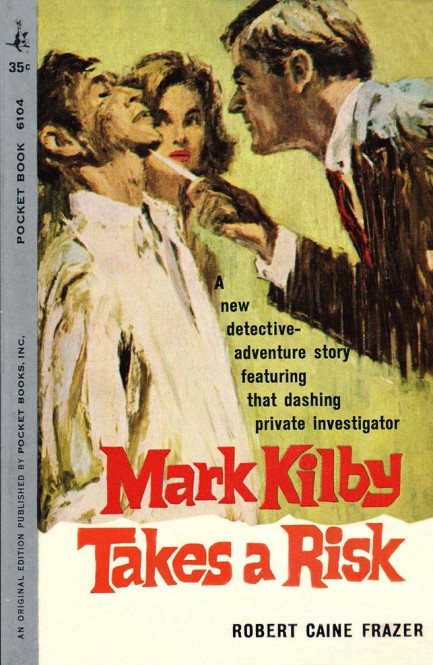 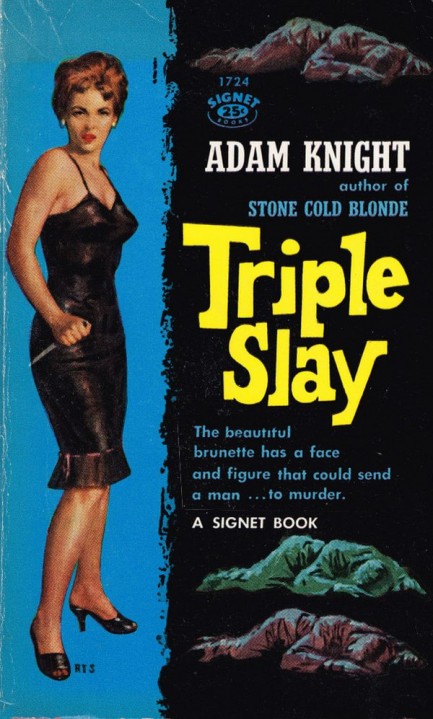 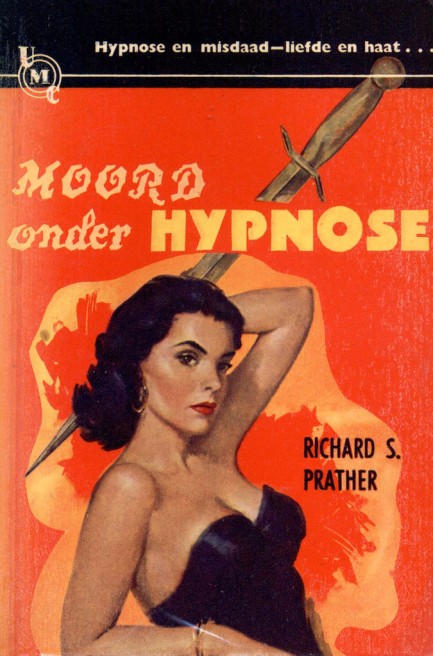 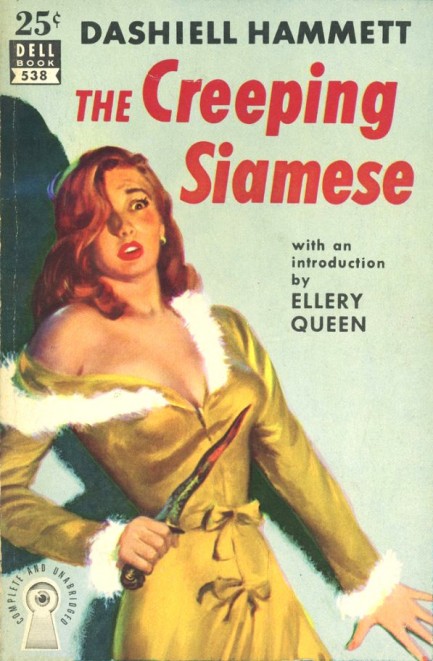 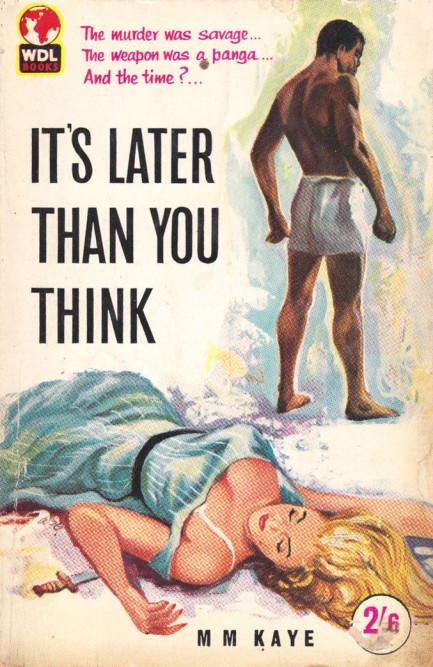 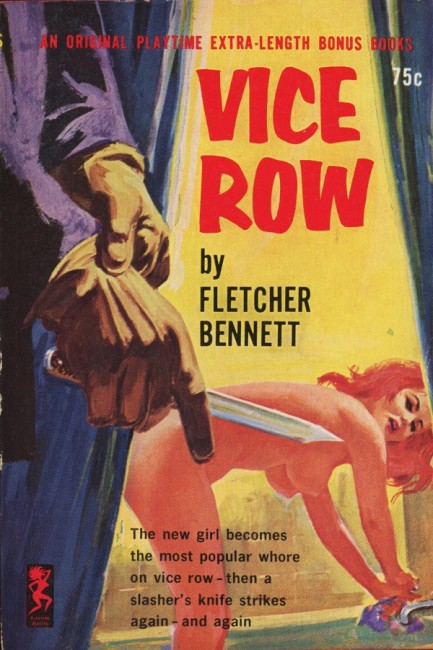 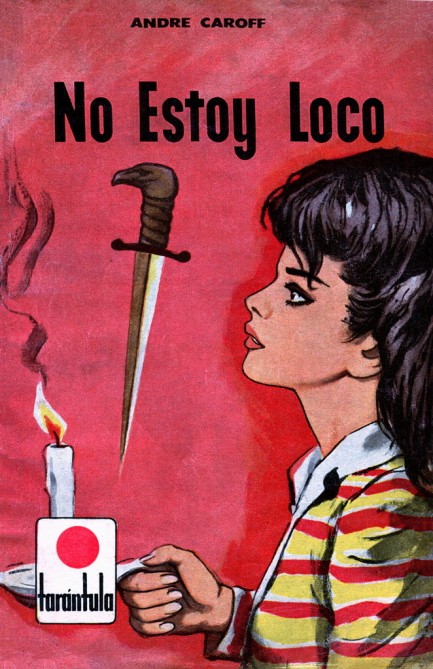 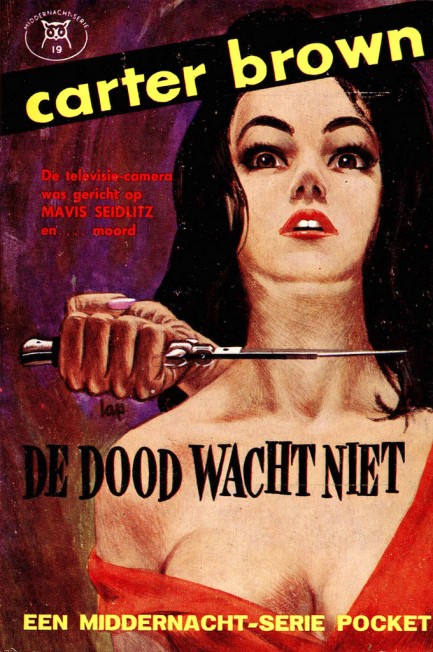 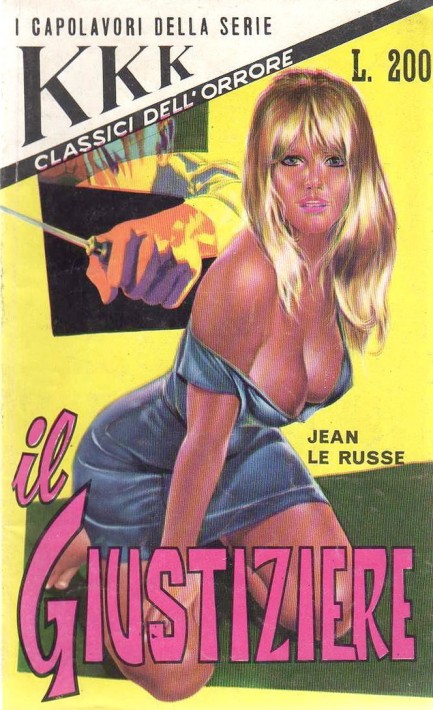 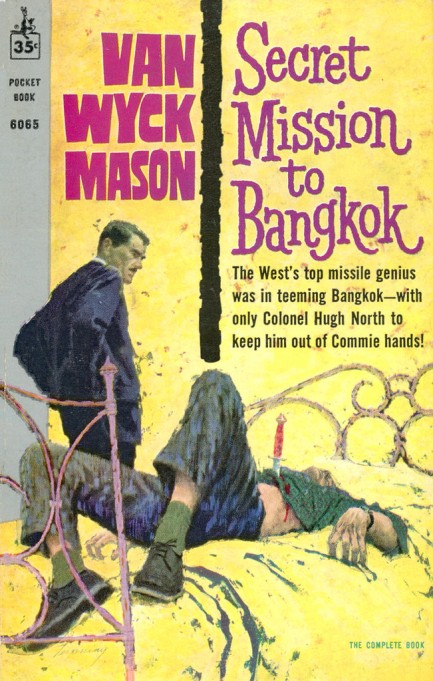 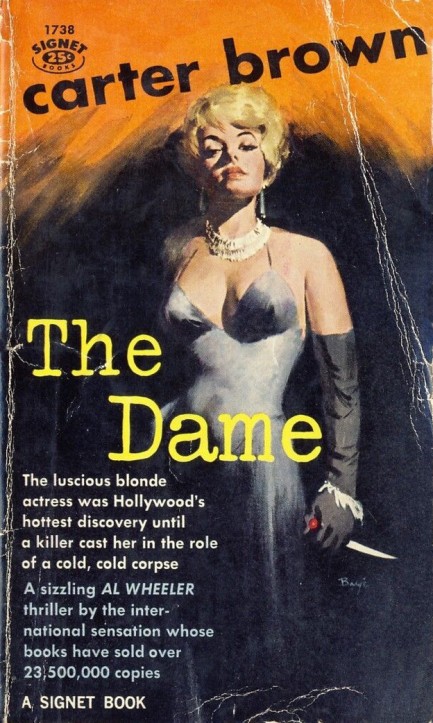 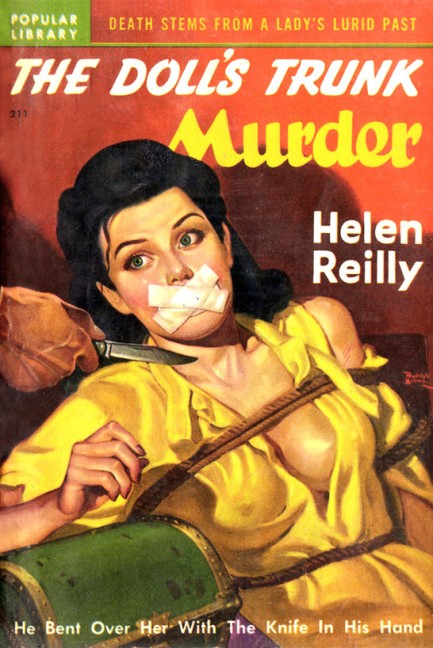
 Time keeps on ticking ticking ticking into the future. 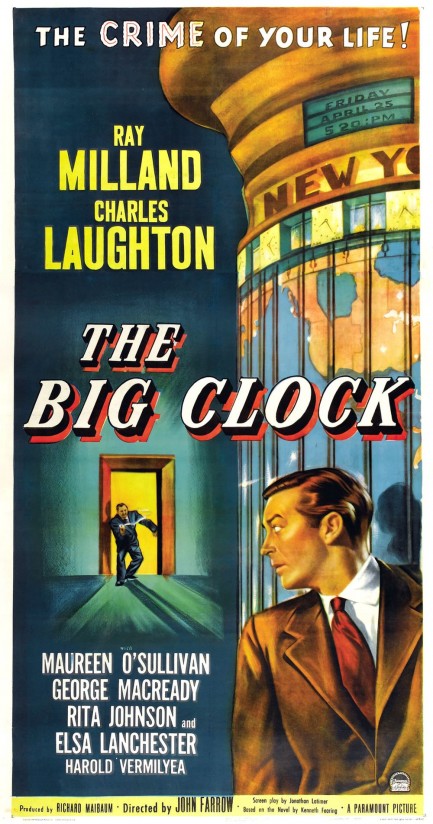
Above is a poster for the film noir The Big Clock, based on Kenneth Fearing's 1946 novel, with Ray Milland playing a journalist at fictional Crimeways magazine who finds himself entangled with the boss's girlfriend, then in murder when she turns up dead. He had nothing to do with it, but had been seen all over Manhattan with her the night of her death, and is presumed to be the killer though nobody has identified him yet. In classic film noir fashion, Milland's boss sets him to solving the case. But how can he, when he's actually looking for himself? And how can he throw his numerous staffers off the scent while appearing to conduct a legit investigation, yet somehow find the real killer? It's quite a mess.
For casual movie fans, distinguishing film noir from vintage drama can be difficult, but of its many defining characteristics, flag this one: the man who finds himself in a vise that slowly tightens due to what had seemed at first to be inconsequential or random acts. A painting Milland bought in an art shop becomes a potential piece of evidence against him. The cheap sundial he acquired in a bar does the same. The random man he exchanged a few words with becomes a potential witness. And so on. He's the subject of a puzzle that has his face in the center. Other characters are slowly assembling pieces from the edges inward. If Milland doesn't outwit them before they find the piece with his face on it, he's screwed.
In addition to an involving plot, nice technical values, Ray Milland, and a large clock, The Big Clock brings the legendary Charles Laughton to the party, along with Maureen O'Sullivan, a decade removed from her ingenue period playing Jane in Johnny Weissmuller's Tarzan movies, all grown up here as the smart, loyal, beautiful wife willing to come to Milland's aid when the chips are down. The film is unique, as well, for its interwoven comedy, unusual in films from this genre. These moments come often, and may seem obtrusive to some, but we thought they fit fine. And that's a good way to sum up The Big Clock. If you're a film noir fan, it'll fit you just fine. It premiered in the U.S. today in 1948.
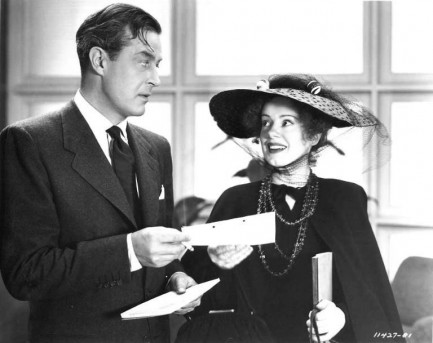 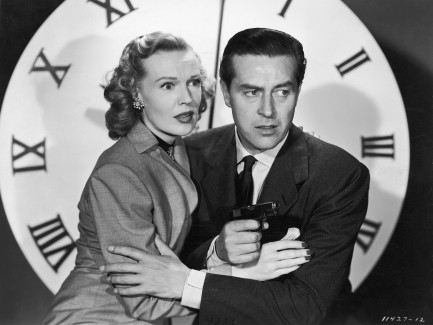 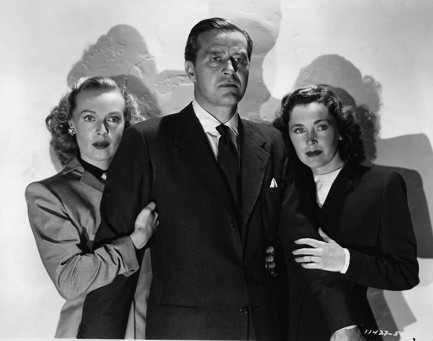 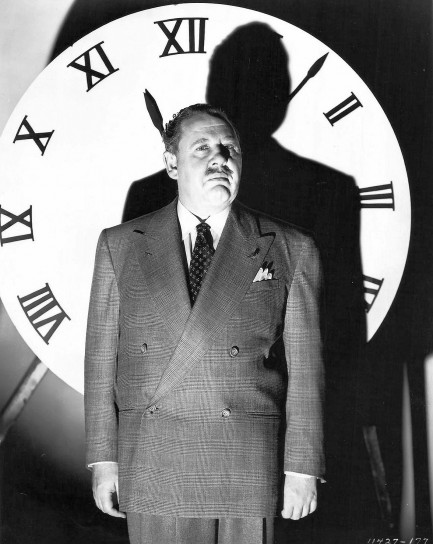 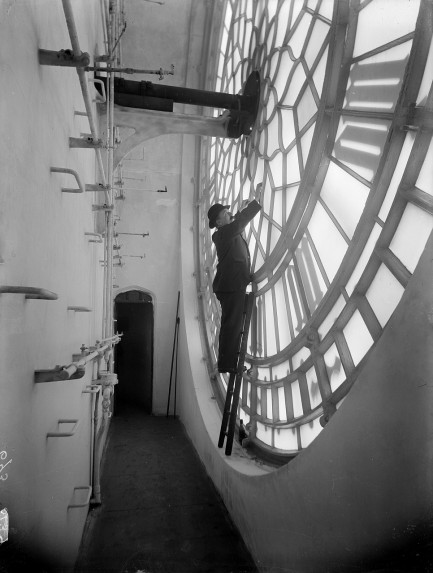 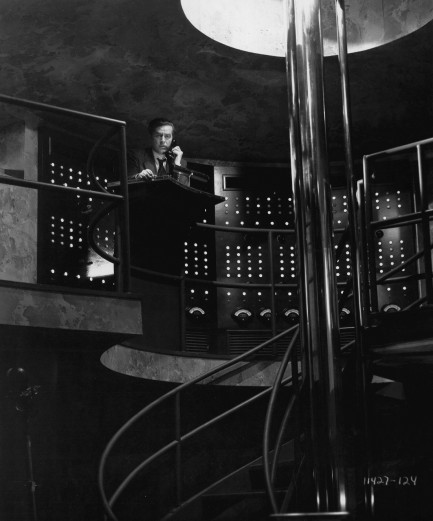 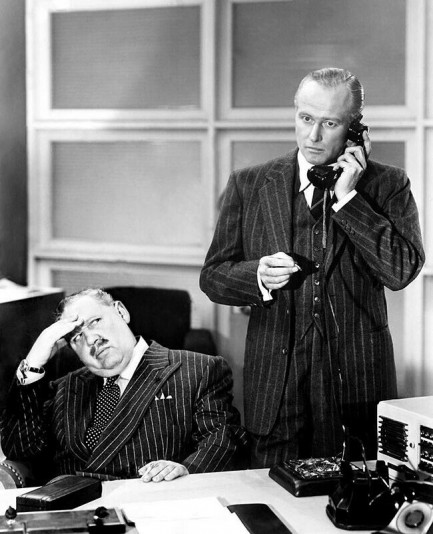 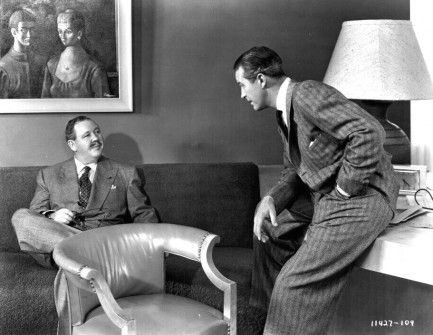
 No matter how far you run you can’t get away from yourself. 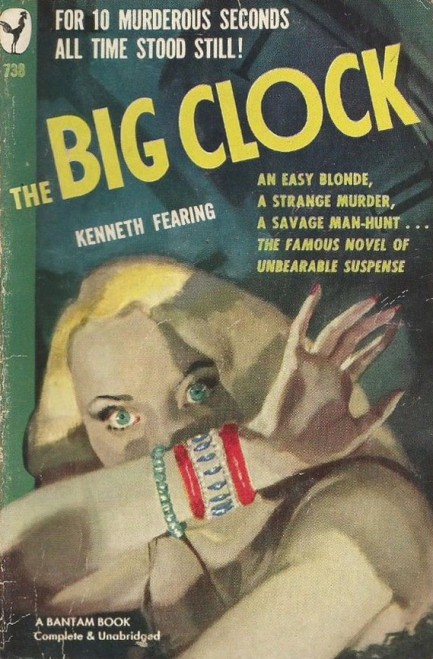
Above is a cover for one of the better pulp novels of the 1940s—Kenneth Fearing’s The Big Clock. An ambitious writer is tight with his powerful publisher/boss. One day he encounters his boss’s wife, drinks are had, chit-chat is made, and he spends the night with her. The next day he drops her off and the publisher happens to witness this, but doesn’t know the identity of the man he saw. When the wife winds up dead, the publisher seeks out a trusted confidant to find the mystery man who was the last person his wife was with before she died. He entrusts the task to the writer, and presto—you have a murder mystery in which the hero is forced by circumstance to search for himself. The novel appeared in 1946, an entertaining movie adaptation followed in 1948, and the Bantam paperback above came in 1949. Highly recommended.
|
 |

The headlines that mattered yesteryear.
2003—Hope Dies
Film legend Bob Hope dies of pneumonia two months after celebrating his 100th birthday. 1945—Churchill Given the Sack
In spite of admiring Winston Churchill as a great wartime leader, Britons elect
Clement Attlee the nation's new prime minister in a sweeping victory for the Labour Party over the Conservatives. 1952—Evita Peron Dies
Eva Duarte de Peron, aka Evita, wife of the president of the Argentine Republic, dies from cancer at age 33. Evita had brought the working classes into a position of political power never witnessed before, but was hated by the nation's powerful military class. She is lain to rest in Milan, Italy in a secret grave under a nun's name, but is eventually returned to Argentina for reburial beside her husband in 1974. 1943—Mussolini Calls It Quits
Italian dictator Benito Mussolini steps down as head of the armed forces and the government. It soon becomes clear that Il Duce did not relinquish power voluntarily, but was forced to resign after former Fascist colleagues turned against him. He is later installed by Germany as leader of the Italian Social Republic in the north of the country, but is killed by partisans in 1945.
|

|
|

It's easy. We have an uploader that makes it a snap. Use it to submit your art, text, header, and subhead. Your post can be funny, serious, or anything in between, as long as it's vintage pulp. You'll get a byline and experience the fleeting pride of free authorship. We'll edit your post for typos, but the rest is up to you. Click here to give us your best shot.

|
|

















































































































